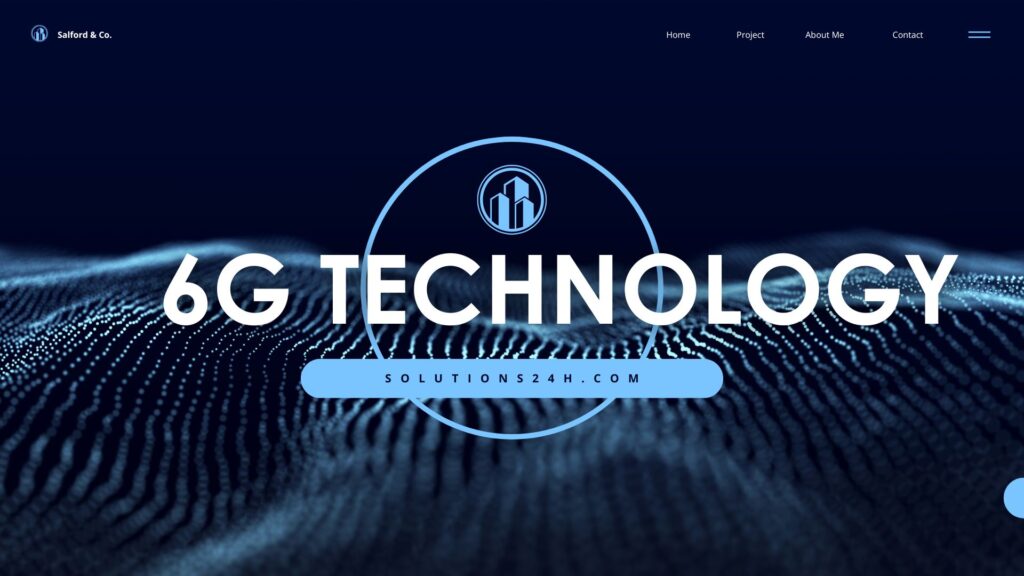6G is the sixth generation of wireless communication technology, set to redefine how we interact with the digital world. It promises to go beyond 5G by delivering:
- Data Speeds up to 1 Tbps
- AI-native self-healing networks
- Global coverage through satellite & terrestrial integration
- Quantum-resistant security
- Digital twins and immersive XR experiences
Although 6G is expected to launch around 2030, 2025 has become a pivotal year for prototypes, research trials, and global strategy development.
What’s New in 6G in 2025?
Terahertz (THz) Communication Prototypes
- Samsung, LG, and NTT are leading tests in sub-THz and THz bands (0.1–10 THz).
- Enables ultra-high-speed wireless backhaul and close-range data transfer at terabit speeds.
- Challenge: Terahertz waves are sensitive to atmospheric absorption and require advanced materials and antenna design.
6G-Enabled Satellite Internet
- China launched the first 6G test satellite in Low Earth Orbit (LEO).
- NASA and SpaceX are researching satellite + terrestrial fusion for seamless coverage in remote and marine areas.
AI-Native Networks
- Unlike 5G, 6G is being designed to be AI-native, with networks that:
- Predict congestion
- Self-optimize routing
- Prevent cyber threats autonomously
- Ericsson, Huawei, and Nokia Bell Labs are developing AI frameworks for next-gen mobile cores.
Holographic & XR Communication
- SK Telecom & LG U+ demonstrated real-time holographic calls using simulated 6G networks.
- Ultra-low latency supports full-body motion and emotion transfer in XR meetings, surgeries, and gaming.
Digital Twins & Smart City Simulation
- Europe’s Hexa-X II project is building real-time digital twins of urban infrastructure for:
- Environmental modeling
- Emergency response
- Urban planning
Who’s Leading the Global 6G Race?
| Region | Key Players & Projects |
|---|---|
| 🇺🇸 USA | Qualcomm, Intel, MIT, Nokia Bell Labs (based in US) |
| 🇰🇷 South Korea | Samsung 6G Forum, LG Future Vision Lab |
| 🇨🇳 China | Huawei, ZTE, CETC, Tsinghua University |
| 🇯🇵 Japan | NTT Docomo, NEC, Tokyo University |
| 🇪🇺 European Union | Hexa-X and Hexa-X II led by Ericsson |
Governments are investing billions in R&D to secure early 6G intellectual property (IP) and infrastructure dominance.
Top Use Cases of 6G
| Sector | Real-World Use Case (2025 Prototypes) |
|---|---|
| Autonomous Driving | Cross-vehicle real-time communication |
| Healthcare | Remote robotic surgeries with haptic feedback |
| XR/Metaverse | Holographic social experiences in 3D environments |
| Defense | Quantum-secure battlefield comms & drone swarms |
| Smart Cities | Real-time city simulations for planning & safety |
Comparison: 5G vs 6G
| Feature | 5G | 6G (Target) |
|---|---|---|
| Speed | Up to 10 Gbps | Up to 1 Tbps |
| Latency | ~1 ms | < 100 µs |
| Frequency | up to 100 GHz | up to 10 THz (terahertz) |
| Coverage | Urban focused | Global (satellite + terrestrial) |
| Intelligence | AI-assisted | AI-native |
| Security | Encrypted | Quantum-resistant |
Challenges Ahead
- 📏 Signal Loss in THz Band – Requires new chipsets, antennas & materials
- 🔌 Power Efficiency – THz systems drain batteries faster
- 🌐 Standardization Lag – International bodies like ITU and 3GPP are still in early discussions
- 🧠 Data Privacy – With AI-native networks, data ownership and ethics become crucial
Timeline to 6G Rollout
| Year | Milestone |
|---|---|
| 2020–2023 | Vision papers, early THz trials |
| 2024–2025 | AI-network tests, holographic demos, satellite prototypes |
| 2026–2028 | Field trials, regional pre-standards testing |
| 2029–2030 | Commercial rollout of 6G in advanced nations |
Conclusion
6G isn’t just about faster speeds—it’s about reimagining communication with intelligence, immersion, and infrastructure that spans land, sea, and space.
With terahertz waves, real-time holography, AI-native networking, and satellite fusion, 6G in 2025 is already shaping the foundation of a fully connected, intelligent world.



